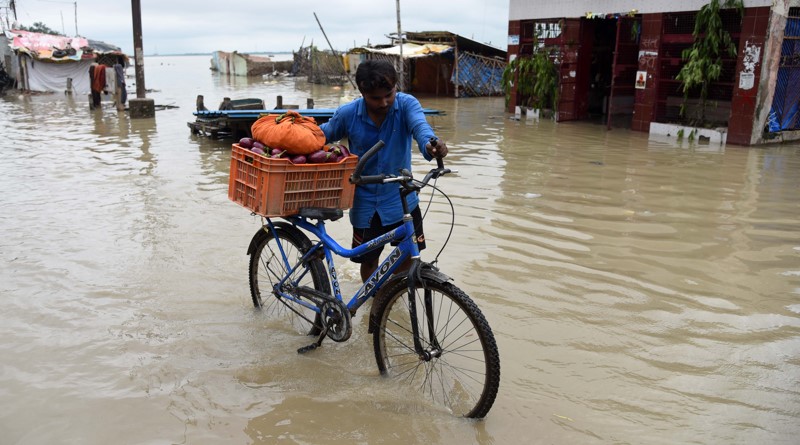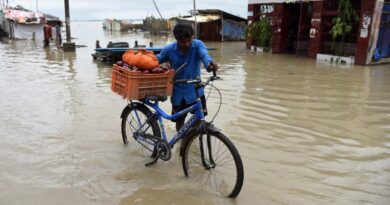Parliamentary panel suggests national-level integrated body to control, manage floods in India

Underlining the lack of preparedness to tackle floods, a Parliamentary standing committee on water resources has recommended setting up of a permanent institutional structure in the form of National Integrated Flood Management Group (NIFMG) for effective flood control and management across India.
The proposed NIFMG should be chaired by the Union Jal Shakti Minister and have concerned ministers from various states as its members. The Group should take up the overall responsibility of coordination as well as building synergies between all agencies responsible for management of floods and their consequences on life and property, the standing committee said in a report that focussed on flood management in the country and evaluated international water treaties between India and neighboring countries of China, Bhutan and Pakistan.
The standing committee, comprising Parliamentarians and experts, recently submitted its report and spelt out a slew of recommendations for the Government to implement.
While taking an overarching responsibility in flood management, the NIFMG should also take up prevention and mitigation strategies of localized flooding events including the issues of hyper construction and water logging in urban areas as well as issues like localized landslides leading to flooding etc. NIFMG should also get a strategy prepared for identification of localized areas that are prone to localized flooding which leads to loss of life and property especially in urban areas, the report said.
Also, NIFMG should exercise supervision over all aspects of flood management in the country including those issues, which fall in the domain of State/local governments as well as which are of international linkages. Given the scale of loss of life and property caused by the floods, which show an increasing trend, NIFMG should present an annual report on this issue to Parliament.
The report noted that floods are natural calamity that India faces almost every year, in varying degrees of magnitude. The frequent occurrence of floods can be attributed to various factors, including wide variations in rainfall both in time and space with frequent departures from the normal pattern, inadequate carrying capacities of rivers, river bank erosion and silting of river beds, landslides, poor natural drainage in flood prone areas, glacial lake outbursts, etc. “India suffers huge economic loss annually besides the precious human lives due to floods”.
As per Constitutional provisions, the subject of flood management including erosion control falls within the purview of the States. The flood management and anti-erosion schemes are planned, investigated and implemented by state Governments with own resources while the Union Government only renders assistance – technical, advisory, catalytic and promotional – to states. The subject of flood control has not been specifically mentioned in any of the three legislative lists included in the Constitution of India, the report underlined.
The committee also suggested that an integrated River basin management plan should be drawn up, which requires collective involvement of all major flood prone Indian states and also the neighbouring countries where the trans-border rivers originate so as to find a lasting solution to the problem.
According to the National Commission on Floods, the total area liable to flood in the country is 40 million hectares (Mha). The total damage to crops, houses and public utilities during the 1953-2018 period has been estimated to be about Rs 400,097 crore while 109,374 human lives and 61,09,628 cattle were lost during the period. “The high losses and damages caused by floods every year is indicative of poor planning, failure of the flood control policy or measures, inadequate preparedness and ineffective disaster management”, the report said.
The committee said it was also of the view that a holistic approach should be adopted to tackle problem of floods, which should involve a multi-pronged strategy such as regenerating and conserving the natural vegetation and soil covers in catchment areas to arrest soil erosion, encouraging those agricultural methods which make best use of floods, invigorate dry springs; recharging of the groundwater table and ensure better percolation of rainwater.
The committee recommended that the Union Government should make concerted efforts for arriving at a national consensus to place ‘flood control and management’ under Concurrent List and at the same time also formulate an overarching national legal structure for efficient, equitable and conservation of water resources. The committee said it was aware of the practical difficulties in brining ‘water’ under the Concurrent List, but these have be resolved for the overall national interest of integrated development of water resources.
The report noted that since most of the rivers are inter-state flowing across states, very often the flood control measures taken by one state may have inter-state ramifications. The inter-state nature of the rivers makes it difficult to implement long term solutions for flood mitigation as the solutions sometimes lie in a different state and benefits to other state.



